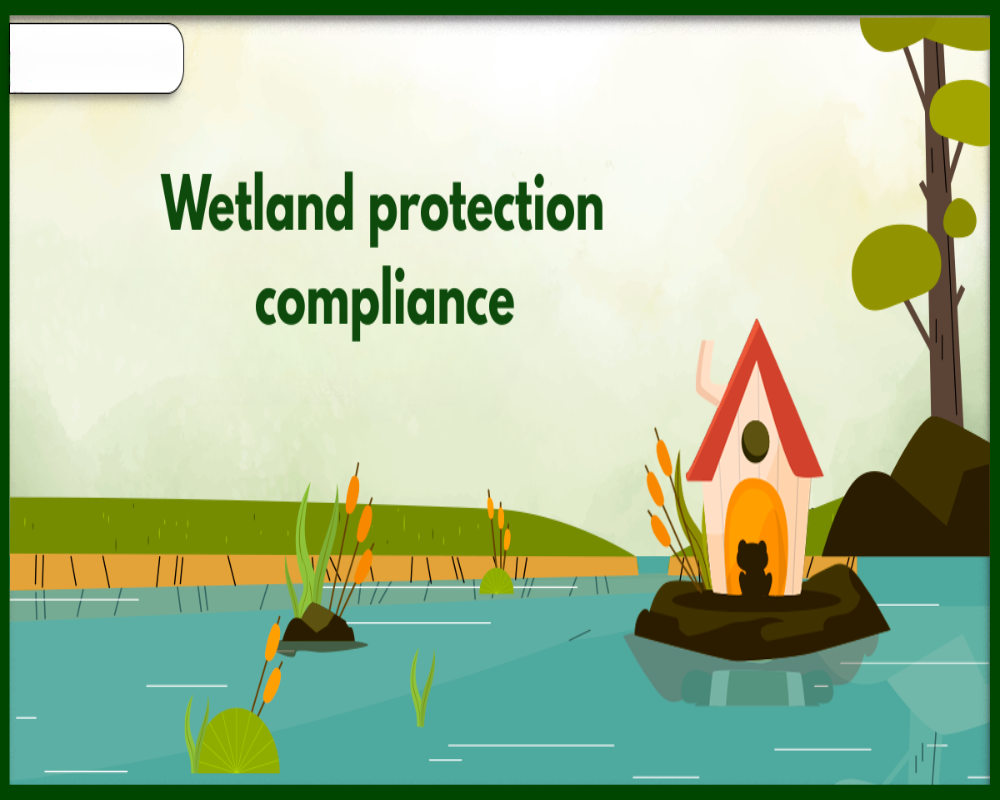Introduction
Wetland protection compliance in site planning refers to the legal and regulatory process of identifying, preserving, and managing wetland areas during the design and development of land-based projects. Wetlands—areas where water saturates the land either permanently or seasonally—are ecologically vital because they filter pollutants, support biodiversity, mitigate flooding, and recharge groundwater supplies. Recognizing their environmental importance, most countries have developed stringent legal frameworks to regulate activities that may impact these sensitive ecosystems. In commercial and residential development, ensuring compliance with wetland protection laws is not only a regulatory requirement but also a key component of sustainable and responsible land use.
Legal Framework and Regulatory Oversight
In many jurisdictions, wetland protection is governed by both national and local environmental laws. In the United States, for example, wetlands are regulated under the Clean Water Act (Section 404), which requires developers to obtain permits from the U.S. Army Corps of Engineers and sometimes the Environmental Protection Agency (EPA) before discharging fill material or altering wetland areas. Similarly, other countries have established comparable laws and agencies responsible for wetlands conservation, often in conjunction with global environmental commitments such as the Ramsar Convention on Wetlands.
Local and regional planning authorities also enforce wetland ordinances and zoning overlays that may further restrict development near wetlands or impose buffer requirements. These rules are intended to preserve the ecological functions of wetlands and maintain natural hydrological patterns in the landscape.
Wetland Identification and Delineation in Site Planning
Compliance with wetland protection regulations begins with accurate wetland delineation. This involves a scientific assessment of the site to determine the presence, boundaries, and classification of wetlands based on soil characteristics, hydrology, and vegetation. Qualified environmental consultants typically conduct field investigations following standardized methodologies approved by regulatory agencies.
Once wetlands are identified, their exact location is mapped and integrated into the site plan. This information is used to guide design decisions, such as determining where to place buildings, roads, utilities, and stormwater systems. Developers must consider wetland boundaries, required buffers, and seasonal variations in water levels to ensure the project will not adversely affect the wetland’s ecological integrity.
Permit Requirements and Review Process
If proposed development will encroach upon or potentially impact wetlands, the developer must apply for a wetland permit or similar authorization. This process involves submitting detailed documentation, including engineering plans, environmental impact assessments, mitigation proposals, and public notices.
Regulators review these applications to evaluate the necessity of the wetland disturbance, potential alternatives, and the developer’s plan to avoid, minimize, or compensate for the impact. In many cases, approval is contingent upon the implementation of wetland mitigation measures, which may include the restoration of nearby degraded wetlands, the creation of new wetlands elsewhere, or financial contributions to wetland conservation funds.
Permitting agencies often require public hearings or comment periods, allowing community members, scientists, and advocacy groups to weigh in on the project. Developers must be prepared to address environmental concerns and, in some cases, revise plans to achieve consensus or meet stricter environmental criteria.
Mitigation and Long-Term Stewardship
Mitigation is a core component of wetland compliance, especially when avoidance is not possible. Successful mitigation must replicate the lost ecological functions of the affected wetland, and it is subject to long-term monitoring and maintenance requirements. Developers may be required to post performance bonds or enter into conservation easements to ensure that mitigation areas are preserved and maintained over time.
In addition to on-site mitigation, developers may use mitigation banking, a system where credits are purchased from pre-approved wetland restoration projects. This approach allows for larger, more ecologically valuable wetland preservation efforts while enabling flexible site design.
Integration with Broader Planning Considerations
Wetland compliance is not a standalone process—it intersects with stormwater management, erosion control, habitat conservation, and landscape design. Site planners must coordinate closely with engineers, environmental consultants, and regulatory agencies to align wetland protection with overall project goals.
Incorporating wetlands as part of a project’s green infrastructure can also yield multiple benefits, including enhanced aesthetics, natural flood control, and opportunities for environmental education or recreation. Many forward-thinking developments now treat wetlands as assets rather than constraints, using them to achieve environmental certifications such as LEED or Green Star.
Conclusion
Wetland protection compliance in site planning is an essential part of environmentally responsible development. It ensures that fragile ecosystems are identified, respected, and preserved during the planning and construction phases of land use projects. Through accurate delineation, thoughtful design, regulatory coordination, and effective mitigation, developers can achieve compliance while contributing to long-term environmental sustainability. As wetland areas continue to face pressure from expanding urbanization and climate change, integrating their protection into the development process is not only a legal mandate but also a vital step toward building more resilient and ecologically sound communities.
Hashtags
#WetlandProtection #SitePlanning #EnvironmentalCompliance #SustainableDevelopment #EcosystemConservation #WetlandConservation #LandUsePlanning #RegulatoryCompliance #GreenInfrastructure #BiodiversityProtection #HabitatPreservation #EnvironmentalStewardship #WetlandRestoration #PlanningForNature #SustainableLandUse #ClimateResilience #NatureBasedSolutions #EnvironmentalImpact #ConservationPlanning #WetlandManagement


